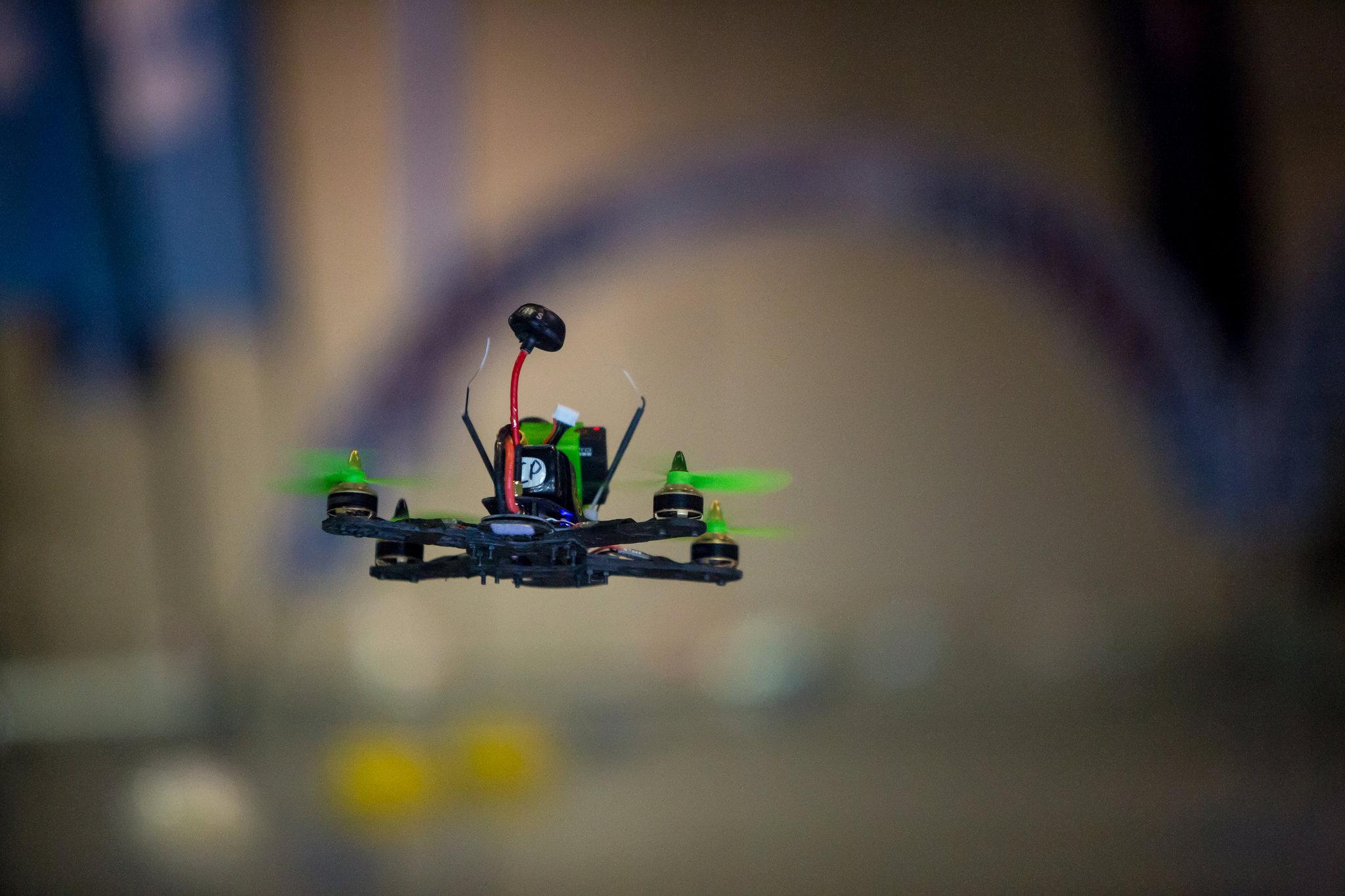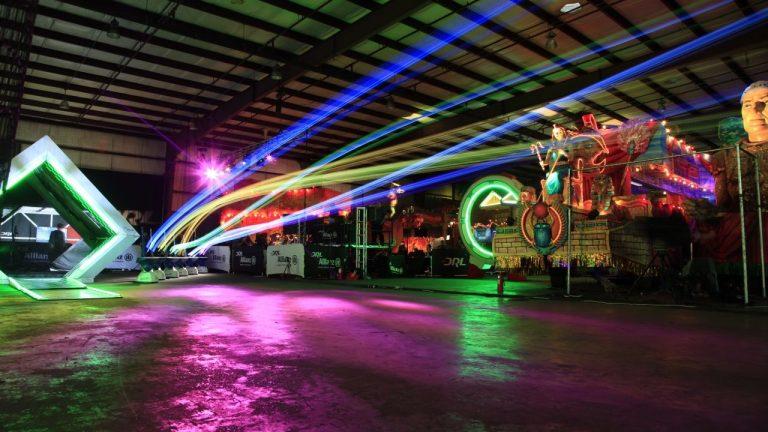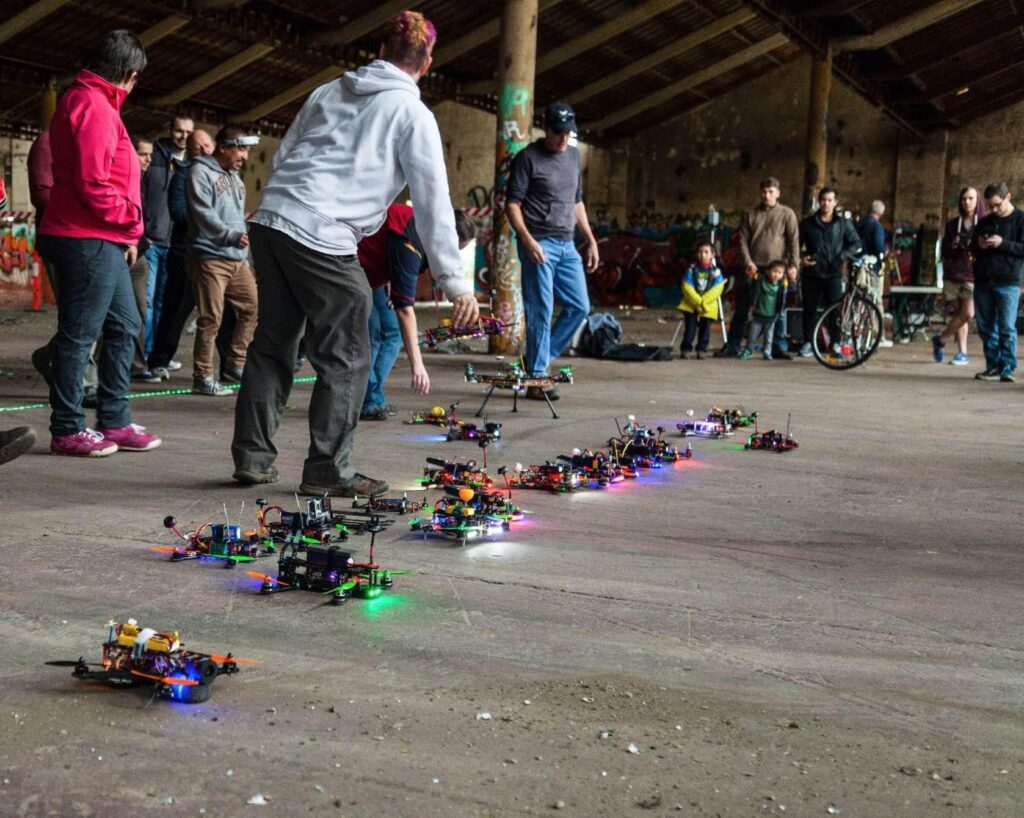In the sky where technology meets adrenaline, a new kind of race is taking flight. Drone racing-a sport where pilots navigate nimble, high-speed machines through twisting courses at breathtaking velocity-is captivating a growing community of enthusiasts and spectators alike. Once a niche hobby confined to tech geeks and hobbyists, drone racing is now buzzing with the potential to soar into mainstream sports culture. But what does the future hold for this electrifying blend of innovation and competition? Is drone racing merely a fleeting fascination or the next big sport ready to claim its place on the global stage? This article explores the trajectory of drone racing, examining its roots, rise, and the factors that could propel it from underground circuits to prime-time arenas.
Table of Contents
- Drone Racing Evolution and Its Growing Fanbase
- Technological Innovations Shaping Competitive Drone Racing
- Challenges Facing Drone Racing’s Mainstream Acceptance
- Sponsorship and Media Strategies to Boost Visibility
- Future Prospects and How to Get Involved in Drone Racing
- In Conclusion
Drone Racing Evolution and Its Growing Fanbase
From underground garages to internationally broadcast competitions, the trajectory of drone racing has been nothing short of spectacular. What began as a niche hobby for tech enthusiasts has rapidly transformed into a dynamic sport that merges cutting-edge technology with adrenaline-pumping competition. The sport’s evolution is marked by advancements in drone design, pilot skills, and immersive race experiences that captivate audiences worldwide.
Several key factors have fueled the surge in drone racing’s popularity:
- Technological innovation: Lightweight frames, enhanced battery life, and high-definition FPV (first-person view) cameras offer pilots unprecedented control and spectators thrilling perspectives.
- Accessibility: Affordable drone models and online tutorials lower the entry barrier, inviting a diverse range of participants.
- Global competitions: Events like the Drone Racing League (DRL) and MultiGP have established professional platforms that attract sponsorships and media coverage.
- Community-driven growth: Enthusiasts and local clubs foster grassroots engagement, organizing events that nurture emerging talent.
The expanding fanbase is both passionate and tech-savvy, often engaging with the sport through live streams, virtual reality experiences, and interactive social media channels. This digitally native audience not only watches but actively participates, sharing tips, creating content, and even influencing race formats. The sport’s appeal is further enhanced by its fast-paced nature and the blend of skill, strategy, and split-second decision-making required to master the skies.
| Year | Estimated Viewership (Millions) | Major Event |
|---|---|---|
| 2015 | 0.5 | First DRL Season |
| 2018 | 2.1 | MultiGP Championship |
| 2023 | 6.8 | World Drone Prix |

Technological Innovations Shaping Competitive Drone Racing
At the heart of drone racing’s rapid evolution lies a suite of cutting-edge technologies pushing the boundaries of speed, precision, and pilot control. Advanced flight controllers equipped with AI-driven stabilization algorithms allow racers to navigate complex courses with unprecedented agility. These intelligent systems adapt in real-time to wind conditions and sudden obstacles, minimizing errors and maximizing performance.
Equally transformative are innovations in battery technology and lightweight materials. The adoption of ultra-high-density lithium polymer cells extends flight times while maintaining a featherlight frame, enabling drones to zip through circuits faster than ever before. Carbon fiber and graphene composites form the chassis, providing a remarkable balance of strength and flexibility that withstands intense collisions without compromising speed.
Another leap forward comes from the integration of immersive FPV (First-Person View) systems. Pilots wear sleek, high-definition goggles linked via low-latency digital video transmission, granting a near-instantaneous cockpit perspective. This technology enhances spatial awareness and reaction times, turning each race into a visceral, high-stakes experience for both participants and spectators.
- AI-enhanced flight controllers for adaptive stability
- Next-gen battery tech for longer, faster flights
- Composite materials for resilient yet light drones
- Low-latency FPV systems for immersive pilot experience
| Innovation | Benefit | Impact on Racing |
|---|---|---|
| AI Flight Controllers | Enhanced Stability | Fewer crashes, smoother turns |
| High-Density Batteries | Longer Flight Time | Extended race duration |
| Carbon Fiber Frames | Lightweight & Durable | Faster acceleration |
| FPV Goggles | Real-Time View | Improved pilot reaction |

Challenges Facing Drone Racing’s Mainstream Acceptance
Despite the exhilarating thrills and cutting-edge technology that drone racing offers, several obstacles stand in the way of its widespread popularity. One of the most significant hurdles is limited public understanding. Unlike traditional sports with decades of history and cultural roots, drone racing is still a relatively new spectacle, often misunderstood as merely a hobby for tech enthusiasts rather than a competitive sport.
Another barrier is regulatory restrictions. Airspace laws and safety concerns impose strict limitations on where and how drone races can be conducted. Organizers frequently grapple with securing permits, ensuring pilot safety, and addressing privacy issues, which can dampen the ability to host large-scale events accessible to mainstream audiences.
Accessibility also plays a crucial role. High-quality racing drones and necessary equipment come with a steep learning curve and significant financial investment. This restricts participation primarily to those with technical know-how and disposable income, making it harder to cultivate grassroots interest and build a diverse fan base.
- Technical complexity deters casual fans from fully engaging with the sport.
- Broadcasting challenges make it difficult to capture and convey the speed and skill involved on traditional media platforms.
- Lack of standardized leagues fragments the community and dilutes competitive narratives.
| Challenge | Impact | Potential Solution |
|---|---|---|
| Public Perception | Low mainstream interest | Educational campaigns and demos |
| Regulations | Limited event locations | Collaboration with authorities |
| Cost Barrier | Restricted participant base | Affordable beginner kits |

Sponsorship and Media Strategies to Boost Visibility
Capitalizing on sponsorship opportunities requires a tailored approach that resonates with both drone racing fans and potential brand partners. Unlike traditional sports, drone racing offers high-tech appeal and a younger, digitally native audience, making it a prime candidate for innovative advertising strategies. Brands aligned with technology, gaming, and lifestyle gadgets find natural synergy here, turning races into immersive marketing platforms.
Media strategies have evolved beyond mere broadcast; the sport thrives on live streaming, interactive social media campaigns, and AR-enhanced viewing experiences. Platforms like Twitch and YouTube allow enthusiasts worldwide to engage in real-time, creating dynamic communities that sponsors can tap into for greater visibility and engagement. Influencers and pilots themselves play a crucial role, acting as brand ambassadors who bring authenticity and reach.
To maximize exposure, organizers and teams often deploy a mix of:
- Branded drones and pilot gear
- Exclusive behind-the-scenes content for sponsors
- Virtual meet-and-greets and fan contests
- Cross-platform hashtag campaigns that trend during events
| Sponsorship Type | Benefits for Brands | Visibility Channels |
|---|---|---|
| Title Sponsor | Maximum brand integration, naming rights | Event broadcasts, official merchandise, venue banners |
| Tech Partner | Showcase cutting-edge products, co-branded content | Live streams, social media, pilot endorsements |
| Community Sponsor | Support grassroots events, local engagement | Local ads, fan meetups, interactive workshops |

Future Prospects and How to Get Involved in Drone Racing
As technology continues to evolve, drone racing is poised to transition from a niche hobby to a mainstream competitive sport. Innovations in drone design, battery efficiency, and immersive pilot experiences like first-person view (FPV) goggles are making races faster, more thrilling, and accessible to wider audiences. The integration of augmented reality (AR) and virtual reality (VR) promises to deepen fan engagement, turning spectators into virtual participants. Major sports networks and streaming platforms have already begun broadcasting international drone racing leagues, signaling a growing appetite for this electrifying new frontier.
For those eager to dive into the action, getting involved has never been more straightforward. Whether you’re a tech enthusiast, a speed junkie, or simply curious, there are multiple entry points:
- Local Racing Clubs: Many cities have grassroots communities where beginners can learn the basics and participate in friendly competitions.
- Online Simulators: Training on drone racing simulators can sharpen your skills without breaking a propeller or crashing into a tree.
- Workshops and Bootcamps: These events provide hands-on experience building, flying, and maintaining drones under expert guidance.
- Joining Leagues: As your skills grow, you can enter amateur and professional leagues that offer structured competition and sponsorship opportunities.
Below is a quick comparison of entry-level options for newcomers:
| Entry Path | Cost | Skill Level | Community Access |
|---|---|---|---|
| Local Racing Clubs | Low | Beginner to Intermediate | Strong |
| Online Simulators | Free to Moderate | Beginner | Variable |
| Workshops/Bootcamps | Moderate | Beginner to Intermediate | Strong |
| Professional Leagues | Variable | Advanced | Exclusive |
Ultimately, the future of drone racing hinges on community growth and technological breakthroughs. For enthusiasts ready to take flight, the time to start is now-whether you’re building your first quadcopter or tuning in to the next high-speed race broadcast, the sky is no longer the limit.
In Conclusion
As the whir of propellers slices through the air and sleek drones zip through complex courses at breakneck speeds, drone racing stands at an intriguing crossroads. Is it merely a niche hobby fueled by tech enthusiasts and adrenaline junkies, or does it possess the wingspan to soar into mainstream sporting arenas? While its future remains uncertain, one thing is clear: drone racing challenges our traditional notions of competition, blending cutting-edge technology with human skill in a way few sports have before. Whether it becomes the next big spectacle or remains a thrilling subculture, drone racing invites us all to watch closely – because sometimes, the future of sport takes flight in the most unexpected ways.

